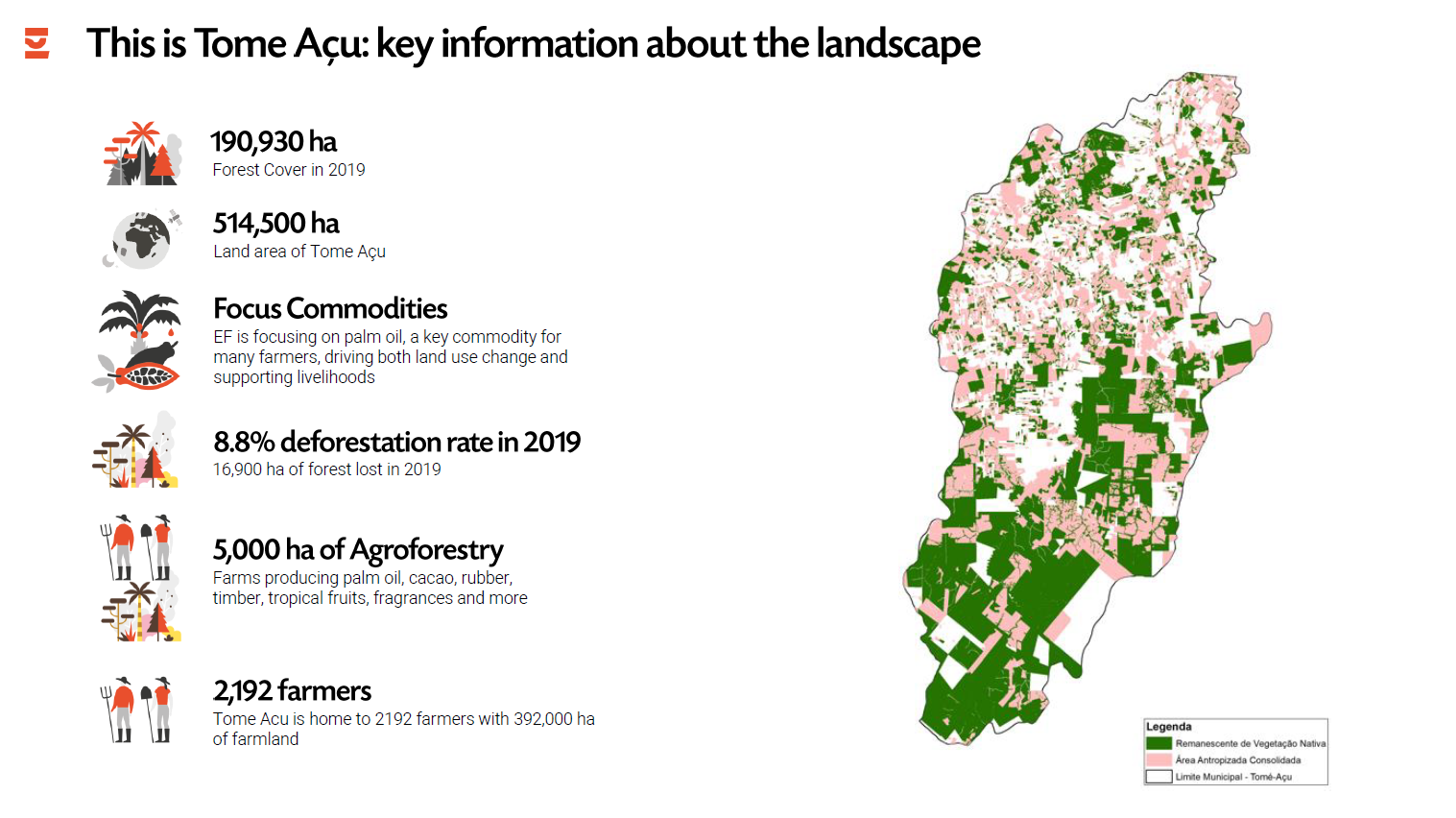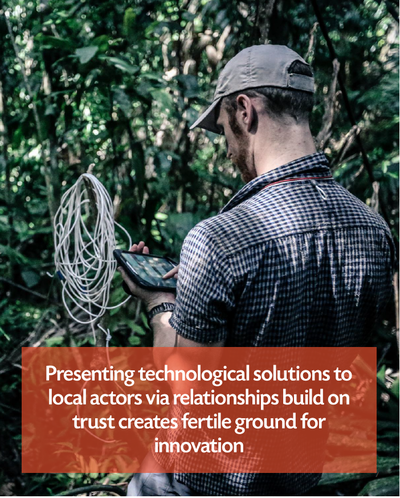THE TOMÉ-AÇU
LANDSCAPE, BRAZIL
Our Landscape vision and approach.
The landscape project aims to work together with local actors on sustainable land use planning, mitigating and adapting to climate change and protecting native forests while fostering economic growth.
To achieve this, Earthworm works with companies, supports farmers and collaborates with local governments to create a sustainable development mode that works for all. We use innovations such as satellite monitoring and smartphone technology combined with a permanent presence on the ground to engage with local actors. The key objectives of the project are:

We began working in Tome Acu through supply chain assessments with eight palm oil refiners to develop and implement no deforestation, no peat and no exploitation policies. This engagement helped improve social and environmental practices at the palm oil refineries with a particular focus on social management systems, labour conditions and conflict management. However, we and the companies we worked with quickly realised that it was necessary to also work with the smallholder segment of the supply chain. A smallholder diagnostic was completed and a Rurality project created to work with 675 palm oil farmers to improve farmer sustainability, supply chain integration and increase resilience through diversification. While we continued to see the impacts of our work in the palm oil supply chain, we came to realise that the scope was not enough. To truly improve social and environmental practice in Tome Acu , more actors had to be engaged, in particular, the municipal government and organisations with expertise in agricultural techniques such as agroforestry.
 WHERE WE ARE TODAY: KEY LANDSCAPE ACTIVITIES
WHERE WE ARE TODAY: KEY LANDSCAPE ACTIVITIES
We are now finalising social and environmental diagnostics. These will identify key challenges to be addressed. To identify conservation areas, an HCS and HCV study* is being completed in 2020 that will help palm oil farmers and refiners comply with their sustainability commitments. In parallel, Earthworm is working with local partners to build a fair and inclusive governance structure that will allow local actors from the public and private sector alongside civil society, farmers and local communities to design landscape level land use plans. As a key element of this, we are developing incentive mechanisms to support farmers and communities to set aside protected areas on their land. We will also work with partners to create a participatory monitoring model that use innovative satellite technology through Starling. Finally, the adoption of innovative farming practices is being evaluated, in particular agroforestry, as Tome Açu has a long history of being at the forefront of sustainable farming models.
*The High Carbon Stock (HCS) and High Conservation Value (HCV) methodologies are two leading approaches use to implement industry commitments towards no deforestation while respecting the rights of local people.
SUSTAINABLE DEVELOPMENT GOALS AND TOMÉ – AÇU PROJECT
2.4 By 2030, ensure sustainable food production systems and implement resilient agricultural practices that increase productivity and production, that help maintain ecosystems, that strengthen capacity for adaptation to climate change, extreme weather, drought, flooding and other disasters and that progressively improve land and soil quality
At Food Production level, with the Integration and engagement of supply chain stakeholder, the project will contribute with these expected results:
Considering other systemic results expected from the project, the contribution will also be coherent when addressing the following SDG's:
12.6 Encourage companies, especially large and transnational companies, to adopt sustainable practices and to integrate sustainability information into their reporting cycle
13.1 Strengthen resilience and adaptive capacity to climate-related hazards and natural disasters in all countries
15.9 By 2020, integrate ecosystem and biodiversity values into national and local planning, development processes, poverty reduction strategies and accounts
16.7 Ensure responsive, inclusive, participatory and representative decision-making at all levels
17.14 Enhance policy coherence for sustainable development
17.17 Encourage and promote effective public, public-private and civil society partnerships, building on the experience and resourcing strategies of partnerships.
